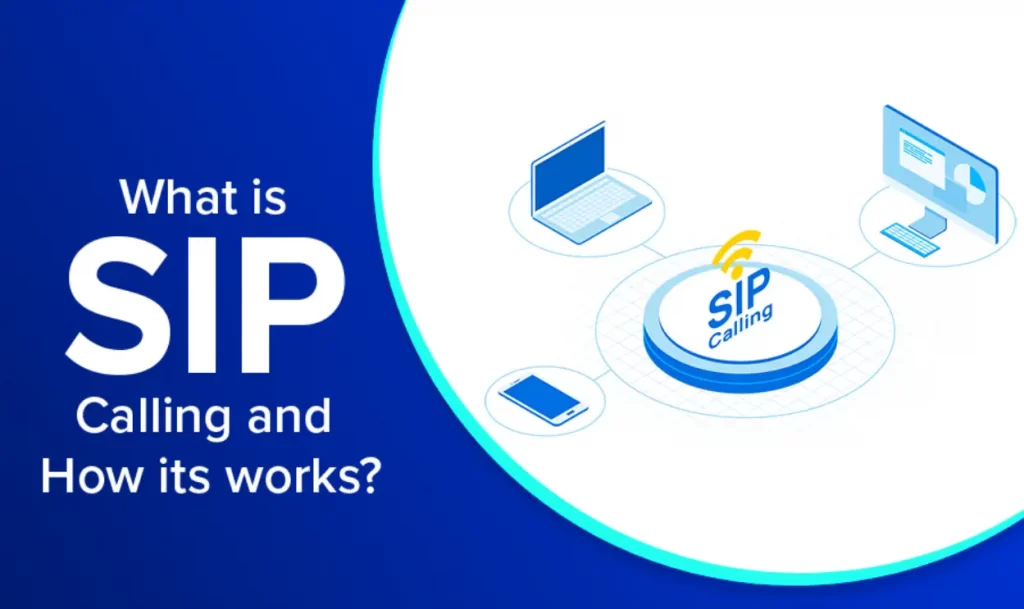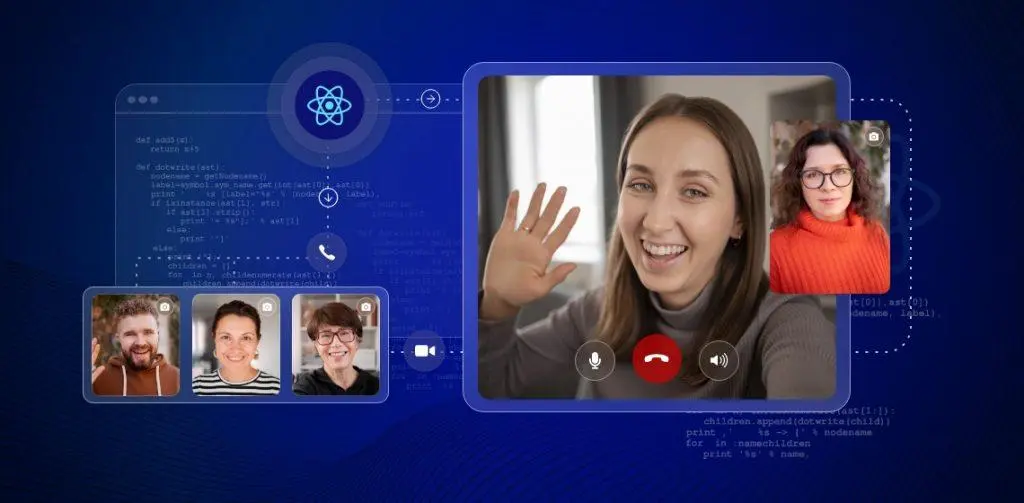What Is SIP Calling: Everything You Need To Know [2026]

Do you know what has saved us from those hefty bills after making international calls? SIP Calling! Here is a full breakdown of this amazing communication technology, you never must miss!
‘Can you hear me now?😖’, ‘Am I audible?😤’ – these are the dialogues you hear again and again when you make international calls over a landline ☎️ during a network congestion. Sometimes echoes, and sometimes distorted voices ruin the most important calls, either because of latency or codec insufficiency. But, it all changed after the year 2000.
That’s when SIP calling came in for commercial use. Organizations started adopting to this technology and since then everything has changed for better – efficient communication 📲, leading to effective businesses 📈.
Let’s take a detailed walk-through of this incredible technology in the next few mins!
Table of Contents
What is SIP Calling?
Session Initiation Protocol, or SIP calling is a communication technology that uses VoIP (Voice over Internet Protocol) to enable voice calls over the internet. This entire transfer of call data happens over the internet, or in the cloud.
SIP Is Amazing, This Is Why:
- It’s Truly Budget-friendly: It’s saves you a lot of money when compared to the expenses inferred on old phone line infrastructure.
- Add Modern Features: Beyond traditional phone line features, you can implement a wide range of communication features like video calling, and real-time chat with our secure instant messaging software.
- You Keep Your Old System: Don’t worry about giving up completely on your old infrastructure. You can use SIP to connect your hardware to internet, and convert it into a modern SIP Calling system.
How Do SIP Calls Work?
1. Starting a Call
To make a SIP Call, you will first use a SIP app or device to dial the person’s SIP address or phone number. The most common ones are usually a softphone/ a special SIP Phone. When you initiate the call, your device will send a message called “INVITE” to the central SIP server.
2. Finding the Person You’re Calling
The SIP server gets your INVITE message and checks its directory to locate the person you’re trying to call. Once it finds them, it forwards your INVITE message to their device.
3. Connecting the Call
When the other person’s device gets the INVITE, it sends back a “180 Ringing” message to the SIP server, letting it know the call is ringing. The server then tells your device that the call is ringing.
If the person answers, their device sends a “200 OK” message to confirm the call is connected. The server then informs your device, and the call is live.
4. Preparing for the Call (Technical Setup)
Before you can talk or share video, both devices need to agree on technical details, like what kind of audio or video format to use (called codecs) and how much internet bandwidth is needed. These details are worked out by exchanging messages behind the scenes.
5. Talking or Sharing Video
Once everything is set up, your voice or video will be turned into digital data, broken into small packets, and sent over the internet to the other person’s device. Their device puts the data back together, so they can hear or see you, and the same happens for you on your end.
Who Uses SIP Calling?
SIP calling is for everyone. However, in this section we will explore the categories of beneficiaries that can make the best out of this technology.
- Businesses that have an IP PBX (On-site phone system): It is easy to move a communication set up from a hardware infrastructure to the cloud.
- Companies with huge user count: While SIP calling is also for Startups, organizations that have a wider audience base spread across the country, because SIP calling can deliver an undistrupted communication service.
Key SIP Features For Business Communication
While most Enterprises heavily rely on secure, internal communication, some of the modern SIP calling features bridges the gap that usually traditional infrastructure exhibit.
1. Voice and Video Calls
- High-Definition Voice (HD Voice)
- Video Conferencing
- Voicemail Integration
- Call Transfer
- Call Hold/Resume
- Call Forwarding
- Presence Indicator
2. Instant Messaging
- One-to-One Messaging
- Group Messaging
- File Sharing
- Read Receipts
- Encryption
- Integration with Presence
3. Unified Messaging
- Email Integration
- Text-to-Speech (TTS)
- Fax-to-Email
- Message Transcription
- Cross-Device Access
4. Call Management Features
- Auto Attendant
- Hunt Groups
- Call Queues
- Do Not Disturb (DND)
- Call Analytics
- Call Recording
- Caller ID & Blocking
5. Mobile Integration
- Softphone Apps
- Call Handoff
- Unified Contacts
- Push Notifications
- Mobile Hotspot Compatibility
6. Integration with Other Business Apps
- Customer Relationship Management (CRM)
- Project Management Tools
- Help Desk Software
- Calendar Integration
- Collaboration Platforms
- API Access
These are some of the key features, but SIP calling offers more. As the demands of businesses evolve, SIP providers are introducing incredibly useful capabilities to easen the communication set up across organizations.
What are the Advantages and Disadvantages Of SIP
The Advantages Of SIP
SIP is undoubtedly a techology that has saved a lot of time and money. But there are other benefits to using SIP calling, particularly in a business environment.
1. Worth The Money You Spend
Sticking to tradition is a good idea. But when it comes to communication set up, the old-style infrastructure extracts all your hard-earned money, and spend on expensive hardware. This is where SIP cuts down the cost – and you know what, it saves over 72% of the expenses for businesses.
2. Offers Multiple Communication Channels
SIP calling goes more than a single communication channel – Voice Call. You can easily implement instant messaging, video calling and conferencing, within a short time.
3. This Technology Is Highly Reliable
Even if a technical issue happens or a power outage happens, SIP systems keep working, unlike the old-type communication lines. Even if there are issues with recieving calls, you can easily redirect the calls to others, making businesses operating all the time.
4. Access Calls On Any Device
You can make or recieve calls on any device like smartphones, desktops and laptop, which means your team or business stakeholders can stay connected wherever they are.
5. Managing SIP Calls Is Easy
Like we discussed before, the traditional communication system is complex. Even managing the entire system is not an easy joke. Here, when you compare SIP Calls, the entire management is simpler and can be handled more efficiently.
6. Transmit Calls At Best Quality
Do you remember the screeching and low-volume calls on landlines? That’s not happening with SIP calls. They deliver a quality that is far better than the old phone communication quality.
7. The Entire System Is Scalable
Imagine replacing heavy landlines systems, wires and hardwares with newer ones, or adding more to the messed up lines. It’s going to be overwhelming that you could imagine. Now this will all get smoother when using SIP calling. It is easy to upscale or downscale your entire communication infrastructure, using this technology.
The Disadvantages Of SIP
Just like every coin has two sides, there are a few drawbacks to SIP technology. But we’d say they are quite not huge.
1. The Technology Is New
Not many businesses know about this technology and implementing it for their enterprise is not yet effective.
2. Depends On Stable Internet Connection
SIP calls usually require a stable internet connectivity. If the connectivity is disturbed, it may lead to call dropping, latency and distortion, resulting in poor user experience.
3. Has Limited Features
SIP calling is not ready for advanced features like Augmented Reality (AR) yet. This might be a huge setback for gaming-apps that depend on AR technology.
4. Can Be Susceptible To Security Threats
Since SIP uses internet connectivity to transmit communication data across the internet, it may be more prone to security risks like eavesdropping, voice data interception and hacking. But the brighter side here is, you can set up encryptions and protocols.
5. The Set Up Is Complex
Implementing SIP is not really easy. It takes time and resources to configure a SIP account, manage network settings and troubleshoot connection issues. However, it is worth it when compared to the complexity of traditional phone lines.
How To Get Started On SIP Calling With MirrorFly
Love this technology? Want to where to get started?
MirrorFly is the answer!
While SIP Calling was launched in the 2000s, MirrorFly implemented it SIP solution in 2008. Since then, for almost 16+ years, our platform has been refining the solution to meet the evolving needs of businesses that yearn for setting up the best communication infrastructure.
Some of the key highlights of this technology is,
- 100% Customizable SIP solution: You can personalize the SIP calling features as much as you need!
- Full Data Ownership: You own the data of your SIP platform, not us, not any third-party. You have all the control, no matter what.
- Custom Security: While security is a concern for Business communication, you need an unique security system, exclusive to your organzation, its tech requirements and ethical value. MirrorFly gives that, letting you customize encryptions and privacy protocols just as you need.
- White-label Your SIP Solution: You need not mention our solution’s name, anyhwhere. You can brand your own logo, colors and themes, and white-label your SIP platform.
- Flexible Hosting: You can host your SIP platform on any server -on your own hardware, or cloud, private cloud or on MirrorFly’s multi-tenant cloud.
Is the list going long?
There’s more MirrorFly can offer and you can check them all out here. And if you are all ready to understand how MirrorFly can contribute to your SIP calling needs, you can simply get on to a call with our experts, right away.
Hope this helps. If you have more questions, please feel free to write down in the comments below and we’ll get the best answers for you!
Looking to Build Your Own SIP Calling App?
Get our enterprise-grade communication solution, that can be set up on your company servers.
Contact Sales 100% customizable
100% customizable White-label solution
White-label solution Full source code
Full source code

Related Articles
- SIP Phones: What They Are & How They Work
- List Of SIP Trunk Providers For All Types Of Businesses
- What is VoIP Phone? – A Complete Guide in 2026 for Beginners
Frequently Asked Questions
What is the difference between SIP and WiFi calling?
SIP calling is a type of internet-based phone system (VoIP) that allows you to make voice calls over different kinds of networks, often without needing to use your mobile phone number. On the other hand, Wi-Fi calling is a feature provided by your mobile carrier that lets you make calls over a Wi-Fi connection using your regular phone number. The main difference is flexibility: SIP calling gives you more options for communication, while Wi-Fi calling is simpler and works directly with your carrier’s services.
What is the difference between SIP and VoIP calling?
VoIP is a technology that lets you make voice calls over the internet by turning your voice into digital data. SIP, on the other hand, is a specific method (or protocol) used within VoIP to manage how calls are started, connected, and ended. You can think of VoIP as the overall system that makes internet calling possible, and SIP as one of the tools that helps it work smoothly. SIP doesn’t just handle voice calls it also supports video calls and instant messaging.
What is the difference between SIP and Landline calling?
SIP calling uses the internet to make voice calls, while landline calling relies on older copper wire systems. SIP is more flexible and comes with advanced features, like letting you make calls from different devices, and it’s usually cheaper to maintain. Unlike landlines, SIP works over digital networks, making it a more versatile way to communicate.
Is SIP calling free?
SIP calling is usually free when both people are using SIP accounts on the same network or platform. It uses the internet to handle voice and video calls, so SIP-to-SIP calls don’t cost extra. However, if you’re calling a regular phone number or landline outside your SIP network, you might have to pay.
How do you make a SIP call?
To make free SIP calls, you’ll need to sign up with a SIP provider, download an app or use a SIP-compatible device, and make sure both sides are using the same SIP network.
Can I make SIP calls on iPhone and Android?
Yes, you can make SIP calls on both iPhones and Android devices. For iPhones, you’ll need to download SIP apps. On Android, you can either use the built-in SIP settings to connect to a SIP provider or install a third-party app. Both iPhones and Androids support SIP calling, giving you options to make high-quality voice and video calls across different devices.




